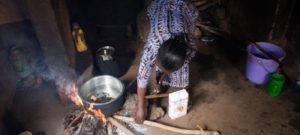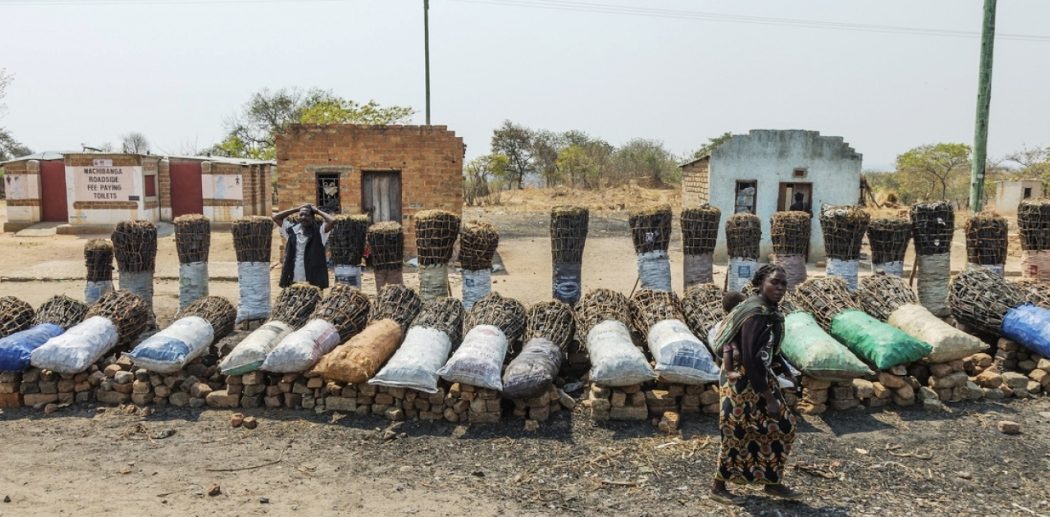In thousands of communities all across the continent of Africa, charcoal and other biomass-based fuels for heating and cooking are at the center of the economy. Charcoal production is the leading cause of deforestation in many areas, so the development or renewable biomass fuels is crucial the the hundreds of reforestation and environmental restoration efforts currently underway there.
A switch to renewable biomass fuels will also help revitalize communities by improving human health. Smoky, inefficient fuels and stoves are a leading cause of lung and other diseases. A wholesale switch to renewable biofuels will also be a crucial factor in restoring the global climate.
But wait, you might say: charcoal is (usually) made from trees, so it’s already a form of renewable energy, right? That’s true enough in theory. In practice, though, it’s not even sustainable, much less regenerative. That process needs to be renovated, the United Nations Environment Programme (UNEP) is leading the way.
While renewable energy is advancing rapidly in Africa due to consistent efforts and investment, biomass is still largely used on the continent. In addition to being of significant value to African economies, it is the single most important energy source for most households and some industries.
 However, high dependence on biomass, even with the development of improved equipment, contributes to deforestation, degradation of soil quality and reduced biodiversity. Biomass use in households is also an important source of indoor air pollution, which, according to the n and Utilization in Africa—takes stock of the current situation and proposes policies and strategies for Member States to accelerate the transition to renewable energy sources.
However, high dependence on biomass, even with the development of improved equipment, contributes to deforestation, degradation of soil quality and reduced biodiversity. Biomass use in households is also an important source of indoor air pollution, which, according to the n and Utilization in Africa—takes stock of the current situation and proposes policies and strategies for Member States to accelerate the transition to renewable energy sources.
UNEP and its partners promote the development of renewable sources of energy and energy efficiency as part of the Sustainable Energy for All initiative and climate mitigation effort. With the financial support from the International Climate Initiative, UNEP just concluded the Building capacity for enhancing bioenergy sustainability through the use of Global Bioenergy Partnership indicators project in Ethiopia and Kenya.
The project provides technical assistance to government officials and experts in Ethiopia and Kenya to assess the sustainability of their bioenergy sectors and to build their capacity for long-term, periodic monitoring. The project is structured around the application and interpretation of 24 indicators to assess the environmental, social and economic impacts of bioenergy production and use. Results from the indicators will be used to inform the decision-making process.
Energy consumption in Ethiopia was an estimated 42 million tonnes of oil equivalent in 2016. Biomass energy sources account for 91 per cent of final energy consumption and for 98 per cent of energy consumption in the residential sector. The Global Bioenergy Partnership project in Ethiopia examined the development of biogas and solid biomass (firewood and charcoal) production to understand how it can contribute to reaching the Sustainable Development Goals as well as to national development policies, such as the Climate Resilience Green Economy Strategy.
With 99 million people relying on the traditional use of biomass for cooking in Ethiopia, access to modern energy, reduction of poverty and better health are potential benefits that biogas and improved biomass cooking solutions can bring. This is compared with the traditional use of biomass in open fires. Other benefits accruing from this intervention include increased employment, greater gender equity and climate change mitigation.
 “These findings help improve our overall knowledge and understanding about Ethiopia’s bioenergy sector and serve as a starting point to improve the sustainability of this sector and support the design of effective sustainable bioenergy policies as part of low-carbon development strategies,” said Fikadu Beyene, Commissioner of Environment, Forest and Climate Change in Ethiopia.
“These findings help improve our overall knowledge and understanding about Ethiopia’s bioenergy sector and serve as a starting point to improve the sustainability of this sector and support the design of effective sustainable bioenergy policies as part of low-carbon development strategies,” said Fikadu Beyene, Commissioner of Environment, Forest and Climate Change in Ethiopia.
The energy mix of Kenya is dominated by biomass then oil and oil products, geothermal and other renewables, according to its National Bureau of Statistics. Biomass contributes a large share of the country’s final energy consumption, supplying more than 90 per cent of rural household energy needs. 43 million people rely on the traditional use of biomass for cooking in the country.
The project helped to assess the current and future potential of the country’s bioenergy sector focusing on two courses of action: the use of sugarcane bagasse briquettes residues by the tea industry and charcoal production from forests, woodlands and farmlands for use by households.
The tea industry consumes almost 1 million tonnes of firewood per year, or more than 4 per cent of the volume of firewood consumed each year in Kenya. The summary report prepared for the project therefore outlines the consequences of the widening gap between supply and demand for wood fuel with current wood fuel supply outstripping demand in various parts of the country.
“The project outcomes give a better understanding of the environment, social and economic impacts of bioenergy use, and helps to sustainably manage this important national resource in Kenya,” said Charles Mutai, Director, Climate Change Directorate in the Ministry of Environment and Forestry.
In Kenya, the project was implemented by Stockholm Environment Institute in collaboration with the Ministry of Environment and Forestry and UNEP.
The Stockholm Environment Institute conducted the calculation and analysis of the 24 indicators applied to the two priority pathways together with the Kenya Forestry Research Institute, Strathmore University and the World Agroforestry Centre.
In Ethiopia, the project was undertaken by the Environment, Forest and Climate Change Commission and the Ethiopian Environment and Forest Research Institute, which conducted the technical calculation and analysis of the 24 indicators applied to the two priority pathways.
These indicators were developed in a collaborative process, led by the Food and Agriculture Organization of the United Nations, which currently hosts the Global Bioenergy Partnership Secretariat. The partnership works with various stakeholders such as governments, intergovernmental organizations and civil society.
All photos courtesy of UN-REDD Programme.

